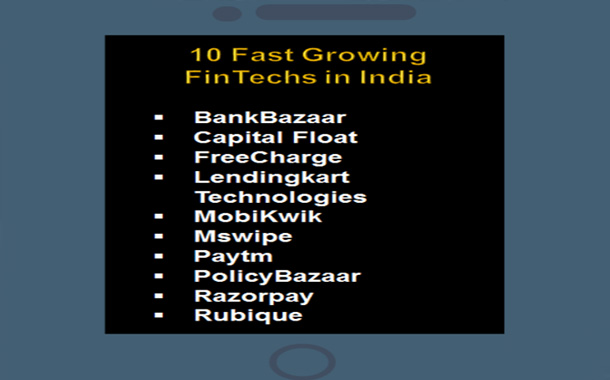IDC Financial Insights unveiled a list of 10 fast growing fintechs in India as part of the broader IDC FinTech 101 list for Asia/Pacific. IDC’s “FinTech Fast 101” refers to the fast-growing fintech players in Asia/Pacific based on extensive on-ground analysis of the dominant fintech players within the region.
IDC’s fintech list makes a reference to the Financial Insights’ Triple U framework – ubiquity, utility, and usability. This is a framework that evaluates fintech data across key metrics such as addressable market, customer adoption, investments, chance of survival, innovation, and marketing. IDC Financial Insights believes that newer categories of fintechs are gaining traction, including those focused on digital identity and authentication, blockchain, cryptocurrencies, robo-advisory, credit analytics and scoring, and usage-based insurance.
Michael Araneta, Associate Vice President for IDC Financial Insights remarked, “Improving financial inclusion has long remained a crucial initiative in India and the Indian Government has been probably the most aggressive among all other markets in achieving the goal of bringing the population to the formal financial services sector.” IDC mentioned specific initiatives like Aadhaar (biometrics-based unique identity number for all residents), Pradhan MantriJan-Dhan Yojana (national mission to ensure access to financial services), and UPI (unified payments interface).
Araneta continues, “Fintechs, who are targeting the unbanked or the underbanked segment to improve the financial access have experienced a phenomenal growth in the last three years in terms of customer adoption, number of start-ups incorporated, and value of investments. 2018 will be the year of sustaining that growth.” Araneta also pointed to a new level of commitment from traditional financial services institutions towards collaborating and partnering with fintech or investing in them to build their own innovation capabilities. This is quite an improvement from how traditional players initially viewed fintech as disruptors and threats to financial services.
Arpita Mitra, Senior Research Manager for IDC Financial Insights, says “The demonetization policy was an important push towards creating a cashless society and concurrently, resulting in a thriving mobile payments market, including remittance, money transfers, and peer-to-peer payments. We are also seeing these payment players expanding into m-commerce as a viable growth strategy. The disruption is also visible in lending, wealth management, and marketplace and aggregators.”
Furthermore, lending fintechs have a huge market opportunity – the potential of servicing more than 50 million SMEs, whose financing requirements have been inadequately met by banks on account of collateral obligations.” IDC states that recent regulations and guidelines related to digital payments and KYC/AML practices have been encouraging as they have built more clarity to market participants, and further strengthened the strategic intent of these players. While the effect of regulations for P2P marketplaces is yet to be seen fully, the new regulation is likely to act as a catalyst towards creating trust and confidence between the investors and borrowers.
“Fintechs in India have been successful locally, but they now need to focus on growth in the rest of Asia and eventually, the world. IDC Financial Insights expects that 2018 will be a banner year for Asia/Pacific FinTech to regionalize – similar to the journey of Alipay and Grab – and the ones who do will be able to achieve scale and ubiquity,” adds Araneta.
The FinTech Fast 101 list is published as part of IDC Financial Insights’ 2017 fintech report series, which helps investment groups, financial services institutions, and technology players in understanding the fintech landscape and identify potential fintech players for investment and collaboration. For this research, IDC’s definition intentionally excludes licensed banks and other licensed financial institutions that are using new technologies to radically change financial services, even to the point of launching their own fintech companies and brands. The idea is to look at the fintech players outside of traditional services.


